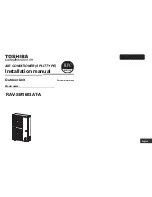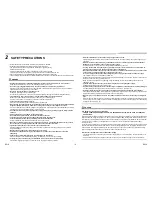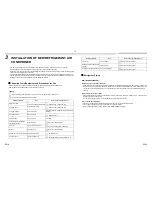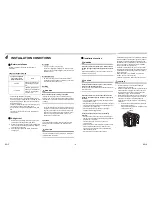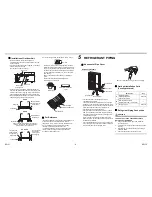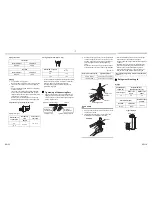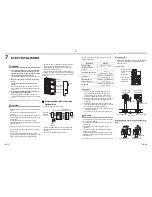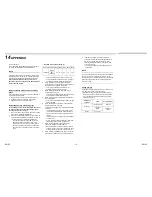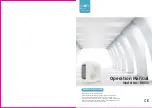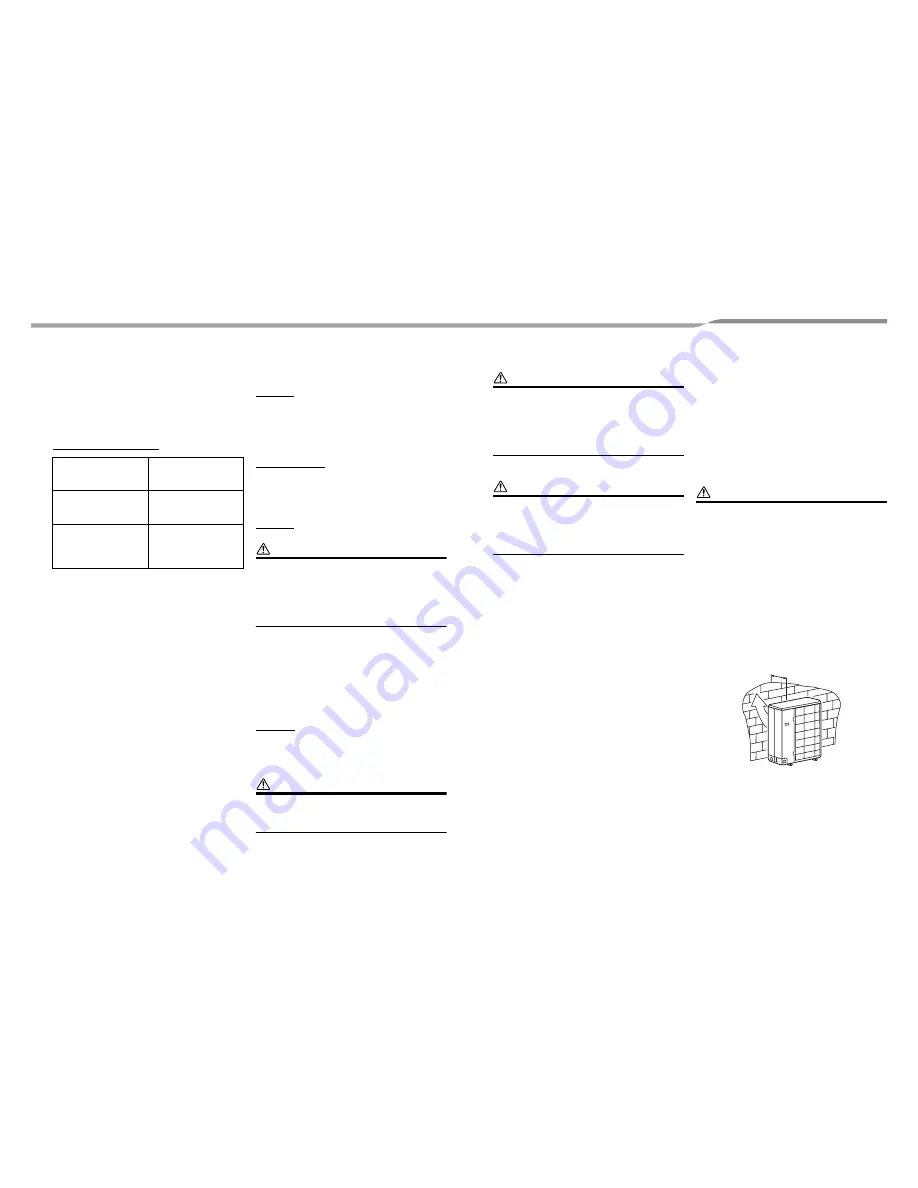
- 4 -
4
INSTALLATION CONDITIONS
Before installation
Be sure to prepare to the following items before
installation.
Length of refrigerant pipe
* Caution during addition of refrigerant
When the total length of refrigerant piping exceeds
30 m, add 40 g/m of refrigerant up to a maximum total
length of piping at 50 m. (Max. amount of additional
refrigerant is 800 g.)
Charge the refrigerant accurately. Overcharging may
cause serious trouble with the compressor.
• Do not connect a refrigerant pipe that is shorter than
5 m
.
This may cause a malfunction of the compressor or
other devices.
Airtight test
1.
Before starting an airtight test, further tighten the
spindle valves on the gas and liquid sides.
2.
Pressurize the pipe with nitrogen gas charged from
the service port to the design pressure (4.15 MPa)
to conduct an airtight test.
3.
After the airtight test is completed, evacuate the
nitrogen gas.
Air purge
• To purge air, use a vacuum pump.
• Do not use refrigerant charged in the outdoor unit to
purge air. (The air purge refrigerant is not contained in
the outdoor unit.)
Electrical wiring
• Be sure to fix the power wires and indoor/outdoor
connecting wires with clamps so that they do not come
into contact with the cabinet, etc.
Earthing
WARNING
Make sure that proper earthing is provided.
Improper earthing may cause an electric shock. For
details on how to check earthing, contact the dealer who
installed the air conditioner or a professional installation
company.
• Proper earthing can prevent charging of electricity on
the outdoor unit surface due to the presence of a high
frequency in the frequency converter (inverter) of the
outdoor unit, as well as prevent electric shock. If the
outdoor unit is not properly earthed, you may be
exposed to an electric shock.
Test Run
Turn on the leakage breaker at least 12 hours before
starting a test run to protect the compressor during
startup.
CAUTION
Incorrect installation work may result in a malfunction or
complaints from customers.
Length of refrigerant
pipe connected to
indoor/outdoor unit
Item
5 to 30 m
Addition of refrigerant is
unnecessary at the local
site.
*31 to 50 m
<Addition of refrigerant>
Add 40 g of refrigerant for
every 1 m of piping that
exceeds 30 m.
Installation Location
WARNING
Install the outdoor unit properly in a location that is
durable enough to support the weight of the outdoor
unit.
Insufficient durability may cause the outdoor unit to fall,
which may result in injury.
CAUTION
Do not install the outdoor unit in a location that is
subject to combustible gas leaks.
Accumulation of combustible gas around the outdoor unit
may cause a fire.
Install the outdoor unit in a location that meets the
following conditions after the customer’s consent is
obtained.
• A well-ventilated location free from obstacles near the
air inlets and air outlet
• A location that is not exposed to rain or direct sunlight
• A location that does not increase the operating noise
or vibration of the outdoor unit
• A location that does not produce any drainage
problems from discharged water
Do not install the outdoor unit in the following
locations.
• A location with a saline atmosphere (coastal area) or
one that is full of sulfide gas (hot-spring area) (Special
maintenance is required.)
• A location subject to oil, vapor, oily smoke, or
corrosive gases
• Places where iron or other metal dust is present. If iron
or other metal dust adheres to or collects on the
interior of the air conditioner, it may spontaneously
combust and start a fire.
• A location in which organic solvent is used
• A location where high-frequency equipment (including
inverter equipment, private power generator, medical
equipment, and communication equipment) is used
(Installation in such a location may cause malfunction
of the air conditioner, abnormal control or problems
due to noise from such equipment.)
• A location in which the discharged air of the outdoor
unit blows against the window of a neighboring house
• A location where the operating noise of the outdoor
unit is transmitted
• When the outdoor unit is installed in an elevated
position, be sure to secure its feet.
• A location in which drain water poses any problems.
CAUTION
1.
Install the outdoor unit in a location where the
discharge air is not blocked.
2.
When an outdoor unit is installed in a location that is
always exposed to strong winds like a coast or on
the high stories of a building, secure normal fan
operation by using a duct or wind shield.
3.
When installing the outdoor unit in a location that is
constantly exposed to strong winds such as on the
upper stairs or rooftop of a building, apply the
windproofing measures referred to in the following
examples.
1)
Install the unit so that its discharge port faces
the wall of the building.
Keep a distance 500 mm or more between the
unit and wall surface.
500 mm
EN-7
EN-8
Summary of Contents for RAV-SM1603AT-A
Page 15: ... 14 MEMO EN 27 EN 28 ...

